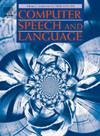基于时频域压缩感知的自适应字典选择语音增强算法
IF 3.4
3区 计算机科学
Q2 COMPUTER SCIENCE, ARTIFICIAL INTELLIGENCE
引用次数: 0
摘要
语音信号增强和降噪在电信、音频广播和军事系统等应用中起着至关重要的作用。本文提出了一种基于时频压缩感知原理,结合稀疏表示和字典学习技术的语音增强方法。该方法构建了一个最优的原子字典,可以稀疏地表示干净的语音信号。该框架的一个关键组成部分是噪声感知块,它利用多个预训练的噪声字典以及噪声语音的频谱特征来构建复合噪声模型。它隔离只有噪声的片段,计算它们的稀疏系数,并评估所有候选字典中的能量贡献。然后选择具有最高能量的字典作为主导噪声类型。该算法通过选择字典池中存在的最相似的噪声结构来动态适应处理未见噪声类型,提供了一定程度的泛化。该系统在三种明确定义的场景下进行评估:(i)使用基线稀疏表示模型,(ii)将字典学习与固定噪声模型结合起来,以及(iii)采用完全自适应噪声感知框架。该方法在宽信噪比范围(-5 dB至+20 dB)内对九种类型的噪声(非平稳、周期性和静态)具有很强的性能。平均而言,与现有技术相比,它的PESQ提高了16.71%,STOI提高了3.39%。仿真结果证实了该方法在噪声抑制和语音清晰度方面的优越性,突出了其作为现实世界噪声环境中语音增强的鲁棒工具的潜力。本文章由计算机程序翻译,如有差异,请以英文原文为准。
Advanced noise-aware speech enhancement algorithm via adaptive dictionary selection based on compressed sensing in the time-frequency domain
Speech signal enhancement and noise reduction play a vital role in applications such as telecommunications, audio broadcasting, and military systems. This paper proposes a novel speech enhancement method based on compressive sensing principles in the time-frequency domain, incorporating sparse representation and dictionary learning techniques. The proposed method constructs an optimal dictionary of atoms that can sparsely represent clean speech signals. A key component of the framework is a noise-aware block, which leverages multiple pre-trained noise dictionaries along with the spectral features of noisy speech to build a composite noise model. It isolates noise-only segments, computes their sparse coefficients, and evaluates energy contributions across all candidate dictionaries. The dictionary with the highest energy is then selected as the dominant noise type. The algorithm dynamically adapts to handle unseen noise types by selecting the most similar noise structure present in the dictionary pool, offering a degree of generalization. The proposed system is evaluated under three clearly defined scenarios: (i) using a baseline sparse representation model, (ii) incorporating dictionary learning with a fixed noise model, and (iii) employing the full adaptive noise-aware framework. The method demonstrates strong performance against nine types of noise (non-stationary, periodic, and static) across a wide SNR range (-5 dB to +20 dB). On average, it yields 16.71 % improvement in PESQ and 3.39 % in STOI compared to existing techniques. Simulation results confirm the superiority of the proposed approach in both noise suppression and speech intelligibility, highlighting its potential as a robust tool for speech enhancement in real-world noisy environments.
求助全文
通过发布文献求助,成功后即可免费获取论文全文。
去求助
来源期刊

Computer Speech and Language
工程技术-计算机:人工智能
CiteScore
11.30
自引率
4.70%
发文量
80
审稿时长
22.9 weeks
期刊介绍:
Computer Speech & Language publishes reports of original research related to the recognition, understanding, production, coding and mining of speech and language.
The speech and language sciences have a long history, but it is only relatively recently that large-scale implementation of and experimentation with complex models of speech and language processing has become feasible. Such research is often carried out somewhat separately by practitioners of artificial intelligence, computer science, electronic engineering, information retrieval, linguistics, phonetics, or psychology.
 求助内容:
求助内容: 应助结果提醒方式:
应助结果提醒方式:


